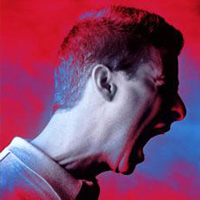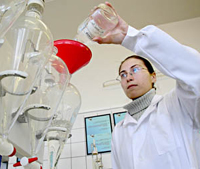What is hyperstoxic catatonia? How to provide emergency care to the patient? Answers to these questions you will find in the article.
Content
Hyperstoxic catatonia
 Hyperstoxic (febrile, fatal) catatonium - a condition that is characterized by extremely pronounced excitation and (or) a catatonic stupor, accompanied by an increase in body temperature. This is an acute psychotic state, which flows against a violation of consciousness, is only traditionally viewed in schizophrenia, as it can develop in other diseases. Pronounced hypergic manifestations, a rapid flow, a combination of psychopathological and somatic violations, mutually reinforcing each other, often lead to a deadly outcome. The most important symptom is hyperthermia. In some patients, the body temperature is a subfebrile body, and then gradually rises to febrile digits, up to the hyperpirection; In the other temperature curve, incorrect, and the febrile and hyperstoxic temperature of the body observed at different times of the day, and the subfebrile temperature remains in the intervals.
Hyperstoxic (febrile, fatal) catatonium - a condition that is characterized by extremely pronounced excitation and (or) a catatonic stupor, accompanied by an increase in body temperature. This is an acute psychotic state, which flows against a violation of consciousness, is only traditionally viewed in schizophrenia, as it can develop in other diseases. Pronounced hypergic manifestations, a rapid flow, a combination of psychopathological and somatic violations, mutually reinforcing each other, often lead to a deadly outcome. The most important symptom is hyperthermia. In some patients, the body temperature is a subfebrile body, and then gradually rises to febrile digits, up to the hyperpirection; In the other temperature curve, incorrect, and the febrile and hyperstoxic temperature of the body observed at different times of the day, and the subfebrile temperature remains in the intervals.
Fever is accompanied by severe tachycardia, which often dissociates with a temperate temperature reaction. Early appearance of tachycardia and temperature-pulse dissociation is characteristic of febrile catatonia. It is also characteristic of the appearance of the patient: the skin of the face of grayish-earth color, sometimes hyperemic, the features of the spotted, the eyes turned and shiny, often with injected cleaners, the look wandering or fixed, droplets on the forehead, baked lips, cracks in the corners of the mouth, dry lips with white or brown raid. Sometimes a profuse sweating, skin hemorrhage. The general condition is rapidly deteriorating, blood pressure decreases, pulse and breathing are rapidly. Death comes to 7 - 14th day from acute vascular failure against the background of brain edema. This syndrome was observed until 1952. and therefore it is not associated with the impact of neuroleptics. Most likely it is caused by the virus of unknown etiology.
Emergency help with hypertoxic catatonia
Conduct electrosculation therapy. After 4 - 5 days, its effectiveness is noticeably reduced. Electrosusproy therapy does not replace drug therapy aimed at eliminating hypotension, hyperpirection and other symptoms. Early intensive infusion therapy through a catheter introduced into a subclavian or cubal vein is recommended. Intravenously drip 300 - 500 ml of 5% glucose solution, Reopolyglyukin. The violation of the electrolyte balance is compensated for by the introduction of isotonic sodium solution of chloride and polyionic solutions of the Ringer-Locke. For the prevention of edema of the brain or its elimination, diuretics are prescribed: Laziks - 1-zML 1% solution intravenously or intramuscularly, urea - 30% solution by 10% glucose solution at the rate of 1 g / kg body weight per day or mannitol - 100 - 200 ml of 10 - 20% solution of intravenously drip (administered for 20 to 30 minutes).
With a decrease in the vascular tone, along with polyglyukin and reopolylukin, Cordamin is introduced - by 2-4 ml per day, Mesoth - 1-2 ml of 1% solution, as well as stanfantine K - 0.5 ml of 0.05% solution, or Corglikon - 1 ml of 0.06% solution, or 1 ml of 0.025% Digoxin solution. Hyperpirection eliminate the parenteral administration of Analgin. On the area of large vessels impose ice bubbles, make wet cold wipes.
To eliminate vegetative disorders, Sibazone (Diazias) is prescribed - 30 - 60 mg per day intravenously. To reduce the violation of consciousness, piracetas are administered - 25 - 75 ml of 20% of the intravenous solution.









